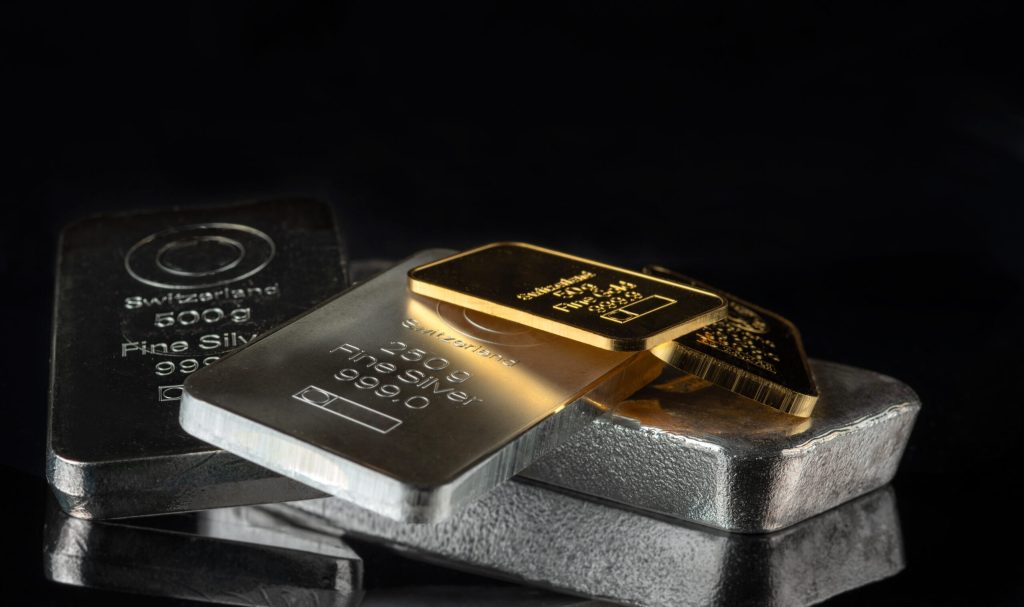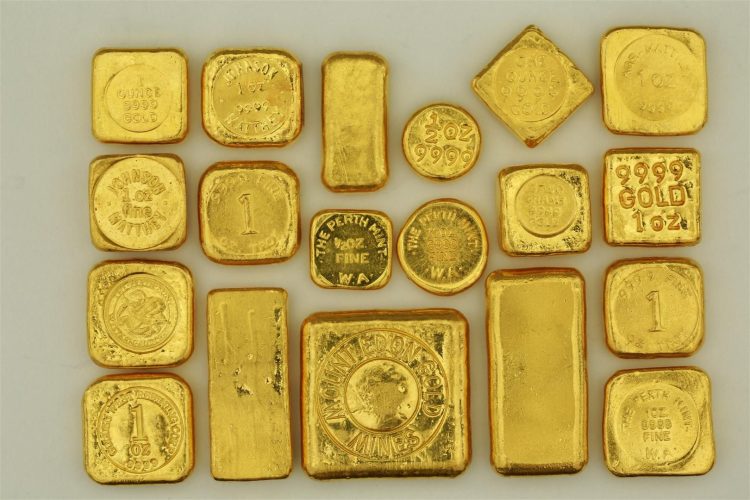Experts Debate Silver’s Rising Role and Its Price Dynamics vs Gold
In the ever-evolving world of precious metals, the question of silver’s future is gaining increasing attention. Historically seen as gold’s “little brother,” silver has often played second fiddle to its more illustrious counterpart. However, as global economic dynamics shift and new industrial demands emerge, many experts are asking: is silver poised to become the new gold? Debates surrounding silver’s rising role, its investment potential, and its price behavior compared to gold are heating up among analysts, investors, and economists alike.
Several factors are driving this renewed focus on silver. Unlike gold, which is primarily valued as a store of wealth and a hedge against economic instability, silver enjoys the dual advantage of being both a monetary metal and an industrial commodity. With rising demand from sectors like renewable energy, electric vehicles, and electronics, silver’s industrial use is expanding rapidly. This growing demand adds a new dimension to silver’s price dynamics, making its future movements potentially more volatile but also more rewarding for investors willing to navigate its complexities.
Experts at institutions such as JPMorgan Chase, HSBC, and the Silver Institute have noted that silver’s unique properties—conductivity, reflectivity, and antibacterial qualities—make it indispensable in a variety of high-growth industries. As the world transitions to greener technologies, silver’s industrial applications are expected to soar, further tightening supply and boosting prices. Moreover, silver is much less abundant than commonly perceived; above-ground stocks are limited compared to ongoing and future demand projections.
When compared to gold, silver has historically exhibited greater price volatility. It tends to outperform gold during bull markets for precious metals but can suffer steeper losses during downturns. Analysts attribute this to silver’s smaller market size and higher sensitivity to economic cycles. However, some believe that this volatility represents opportunity, especially for investors willing to adopt strategic entry and exit points based on market conditions.
Another interesting aspect is the evolving gold-silver ratio, a metric that measures the amount of silver it takes to buy one ounce of gold. Historically, the ratio has averaged around 50 to 60 but spiked above 100 during extreme market stress periods, such as the early months of the COVID-19 pandemic. As of late 2024, the ratio has been narrowing, suggesting growing relative strength in silver. Experts argue that if the gold-silver ratio continues to decline, it could indicate that silver is ready to close the historical value gap with gold.
Analyzing Comparative Historical and Projected Pricing
To truly assess whether silver could become the “new gold,” it’s crucial to analyze historical price movements, market conditions, and expert projections for both metals.
Historical Performance Overview
Historically, gold has been the more stable and steadily appreciating asset. Over the past 50 years, gold has provided consistent returns, especially during periods of economic turmoil, high inflation, and geopolitical uncertainty. Silver, on the other hand, has experienced more dramatic price swings. It soared during the Hunt brothers’ attempted cornering of the silver market in the late 1970s and again during the post-2008 financial crisis, driven by inflation fears and a surge in industrial demand.
Between 2008 and 2011, silver prices skyrocketed from under $10 an ounce to nearly $50, outperforming gold during the same period. However, following that peak, silver entered a prolonged bear market, dropping more sharply than gold and lagging in recovery for most of the subsequent decade. This historical behavior illustrates silver’s leverage effect: it tends to magnify gold’s movements, both upward and downward.
Recent Trends and 2024 Developments
Over the last few years, silver has shown promising resilience. While gold breached the $2,000 per ounce threshold multiple times amid inflation fears and global uncertainty, silver has clawed back toward the $30 per ounce mark, a critical psychological barrier. The resurgence has been fueled partly by the ongoing global push toward clean energy, where silver plays a crucial role in photovoltaic cells for solar panels and various other technologies.
Moreover, supply constraints due to lower mining outputs during the pandemic years and the slow reopening of mining operations have tightened the physical silver market. Coupled with growing demand, these factors have created a more favorable backdrop for silver’s price outlook heading into 2025.

Expert Projections for Silver and Gold
Top analysts have outlined various scenarios for silver and gold prices based on different economic and market conditions.
Scenario 1: Inflation and Economic Uncertainty Persist
In a high-inflation, high-uncertainty environment, both gold and silver are expected to benefit. Gold could climb to $2,500 per ounce or higher, while silver could surge past $35, with some bullish forecasts even predicting a return to the $50 mark. Silver’s industrial demand would act as an additional catalyst, potentially pushing its price gains to outpace gold’s in percentage terms.
Scenario 2: Inflation Eases, Economic Stability Returns
Should inflation moderate and global economic growth stabilize, gold’s upward momentum may cool, consolidating around $2,000–$2,200. Silver, in this scenario, could still experience moderate growth due to its industrial uses, maintaining a price range between $28 and $32 per ounce. The gold-silver ratio could narrow further toward 60, indicating stronger relative performance by silver.
Scenario 3: Renewed Economic Growth, Rising Interest Rates
If economic growth accelerates significantly and interest rates rise, gold prices could soften, potentially falling to $1,800 or lower. Silver could face a similar downward adjustment but might show more resilience due to persistent industrial demand. Analysts suggest silver could stabilize in the mid-$20s even under bearish conditions, making it a relatively attractive medium-term play.
Long-Term Comparative Outlook
Over the longer term, the consensus among experts is that silver may offer higher percentage returns than gold, albeit with greater volatility. As global industrial demand continues to expand, particularly in renewable energy, electric vehicles, and advanced electronics, silver’s strategic importance is set to grow. This dual demand—investment and industrial—positions silver uniquely compared to gold, which relies primarily on investment and jewelry sectors.
Furthermore, silver’s affordability relative to gold makes it more accessible to a broader range of investors, potentially broadening its demand base as more individuals seek tangible assets amid ongoing economic uncertainty.
Key Investment Takeaways for Silver and Gold in 2025 and Beyond
- Diversify Between Gold and Silver
Smart investors often hold both metals to balance stability (gold) and growth potential (silver). Allocating a proportion of one’s portfolio to each can help mitigate risk while maximizing upside. - Watch the Gold-Silver Ratio
Monitoring changes in the gold-silver ratio can provide important signals for rebalancing investments. A falling ratio often favors increased silver allocations. - Consider Industrial Trends
For silver, keeping an eye on developments in renewable energy, automotive electrification, and technological innovation will be crucial. Growing demand in these sectors directly supports silver’s long-term price appreciation. - Prepare for Volatility
Silver’s price movements are typically more erratic than gold’s. Investors should be prepared for swings and may want to adopt longer investment horizons to ride out volatility. - Physical vs Paper Silver
Given supply concerns and premiums in the physical silver market, some investors prefer holding tangible silver coins and bars rather than relying solely on ETFs or derivatives.
Conclusion
Is silver the new gold? While gold remains the ultimate safe-haven asset, silver’s evolving role cannot be overlooked. As industrial demand surges and investment interest remains strong, silver is carving out a distinct and potentially lucrative niche in the precious metals landscape. While its journey will likely involve more twists and turns than gold’s, silver’s dual role as both an industrial necessity and a monetary asset positions it as an increasingly compelling choice for forward-thinking investors. Those who understand and embrace its unique dynamics could be well rewarded in the years to come.
































